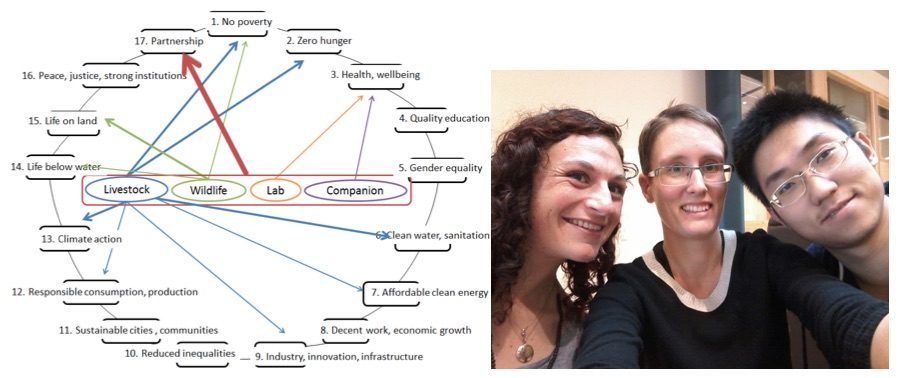How do Animal Genetics Relate to the SDGs?
This past October a group of animal geneticists attended a 5-day PhD level course run by the European Graduate School in Animal Breeding and Genetics (EGS-ABG), and hosted by the Swedish University of Agricultural Sciences. The course was titled, “The Sustainability Concept in Animal Breeding” — and the UN Sustainable Development Goals (SDGs) were at the core of the content. The existence of this course, coming so quickly on the heels of the SDGs being adopted at the UN, seems to prove that the SDGs really are universal. What follows is a summary based on a longer article by the course director, Prof. Lotta Rydhmer.
The course began by offering a broad perspective on the sustainable use of animals, and presenting an overview of the SDGs. [Note: 17Goals project director Alan AtKisson provided an overview lecture, using materials from the 17Goals.org website.] During the next 5 days the lectures would become more and more specific, as we delved into topics like breeding goals, economic weights, and feed efficiency — but the SDGs were referred to throughout the course. Some of the most compelling group discussions emerged in response to one particular question, posed to us in the beginning of the course:
“In what way do animals matter when it comes to the achievement of the SDGs?”
Although animals are only mentioned once in the actual text of the 17 SDGs, on closer inspection one can see that animals do, in fact, have an either direct or indirect impact on nearly every goal. Here are a few examples we discussed:
- Many landless farmers in low income countries rely on livestock for their livelihood. Several groups mentioned the White Revolution in India as an example: dairy farmers from small and large farms have been involved in the improvement of management systems on the farm, including the development of a milk distribution system. And animal breeding has been an important part of this success. In this example, animals have contributed not only to reduced poverty and hunger (Goals 1 and 2) but also to increased gender equality (Goal 5).
- Companion animals contribute to wellbeing and a healthier lifestyle for their owners (Goal 3). The role of animals as models in human medical research was also mentioned in relation to this example.
- Many wild animal populations are fundamental for various ecosystems. One group mentioned that ecotourism based on wildlife provides a means for the maintenance of biodiversity (Goal 15) while at the same time generating income for people in rural areas (Goal 8).
Inevitably, our discussion also uncovered the negative, SDG-counterproductive, side to animals and animal production: Animal production can be associated with land erosion, greenhouse gases, usage of antibiotics, and nutrient leakage.
But what if we viewed these challenges as opportunities? This is the mindset that many of the participating PhD students walked away with — the mindset of opportunity, the motivation to improve inefficiencies and transform existing systems into ones that contribute more benefit than harm, and ultimately align with the SDGs.
Diagram by PhD students Sonia Eynard, Johanna Karlsson, and Shizhi Wang (L to R in the selfie), showing how animals are associated with SDGs.
What do you think? In what way do animals matter when it comes to the achievement of the SDGs? What opportunities exist to improve existing systems and practices within animal production?This article was adapted from a longer report written by Lotta Rydhmer from the Swedish University of Agricultural Sciences. If you have questions about this course, she invites you to contact her at Lotta.Rydhmer@slu.se.
Goal 1/Goal 2/Goal 5/Goal 6/Goal 12/Goal 15/Animal Production


No comments